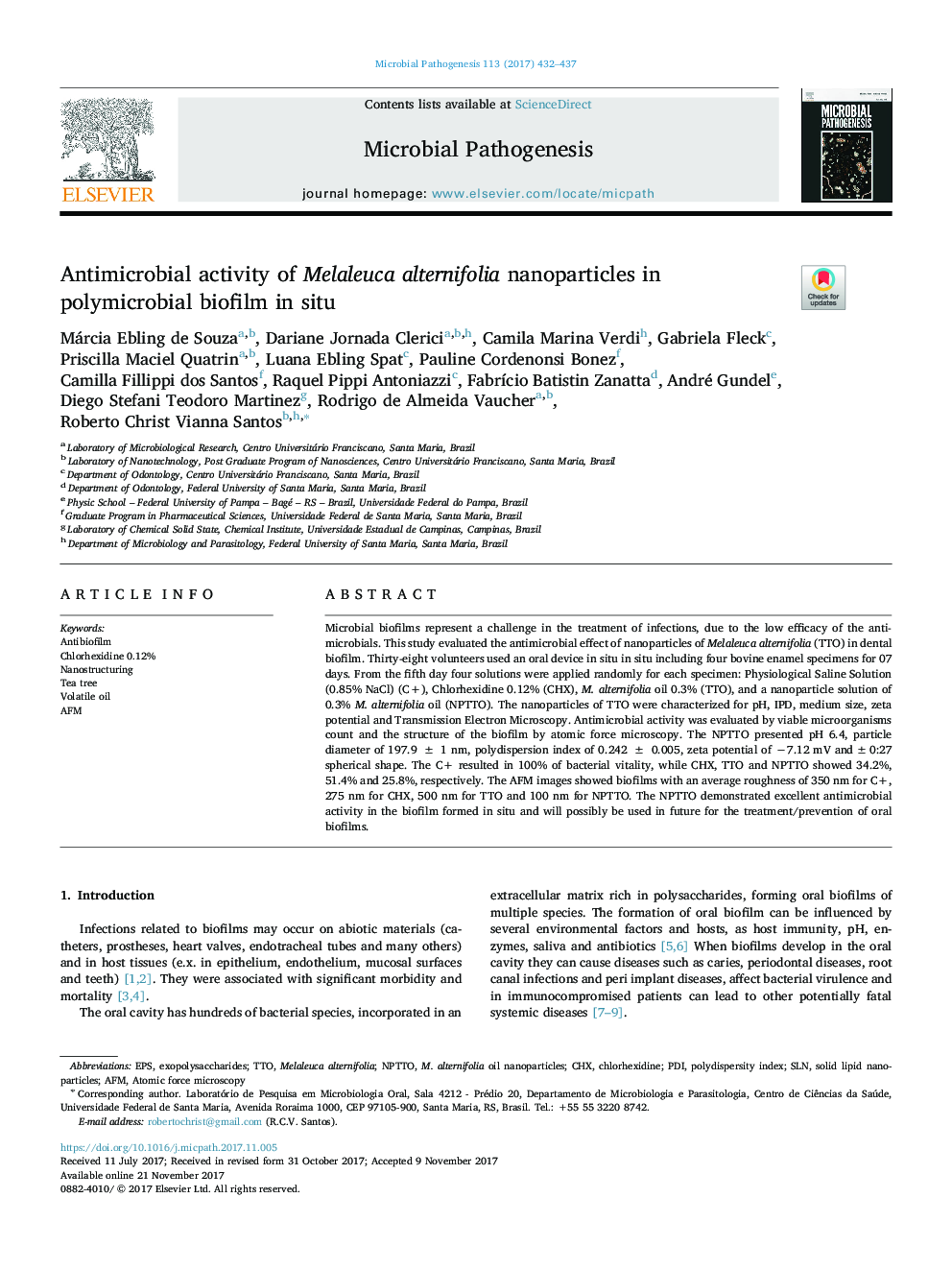| Article ID | Journal | Published Year | Pages | File Type |
|---|---|---|---|---|
| 8750003 | Microbial Pathogenesis | 2017 | 6 Pages |
Abstract
Microbial biofilms represent a challenge in the treatment of infections, due to the low efficacy of the antimicrobials. This study evaluated the antimicrobial effect of nanoparticles of Melaleuca alternifolia (TTO) in dental biofilm. Thirty-eight volunteers used an oral device in situ in situ including four bovine enamel specimens for 07 days. From the fifth day four solutions were applied randomly for each specimen: Physiological Saline Solution (0.85% NaCl) (C+), Chlorhexidine 0.12% (CHX), M. alternifolia oil 0.3% (TTO), and a nanoparticle solution of 0.3% M. alternifolia oil (NPTTO). The nanoparticles of TTO were characterized for pH, IPD, medium size, zeta potential and Transmission Electron Microscopy. Antimicrobial activity was evaluated by viable microorganisms count and the structure of the biofilm by atomic force microscopy. The NPTTO presented pH 6.4, particle diameter of 197.9 ± 1 nm, polydispersion index of 0.242 ± 0.005, zeta potential of â7.12 mV and ±0:27 spherical shape. The C+ resulted in 100% of bacterial vitality, while CHX, TTO and NPTTO showed 34.2%, 51.4% and 25.8%, respectively. The AFM images showed biofilms with an average roughness of 350 nm for C+, 275 nm for CHX, 500 nm for TTO and 100 nm for NPTTO. The NPTTO demonstrated excellent antimicrobial activity in the biofilm formed in situ and will possibly be used in future for the treatment/prevention of oral biofilms.
Keywords
Related Topics
Life Sciences
Immunology and Microbiology
Microbiology
Authors
Márcia Ebling de Souza, Dariane Jornada Clerici, Camila Marina Verdi, Gabriela Fleck, Priscilla Maciel Quatrin, Luana Ebling Spat, Pauline Cordenonsi Bonez, Camilla Fillippi dos Santos, Raquel Pippi Antoniazzi, FabrÃcio Batistin Zanatta, André Gundel,
